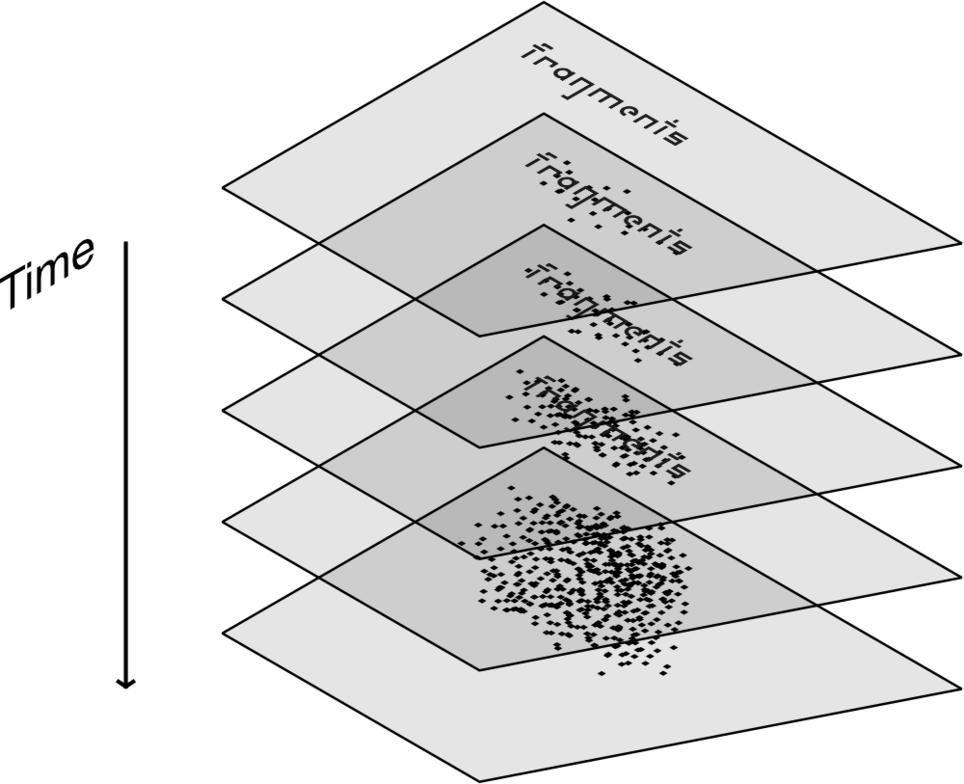Fragments – a cross-medial sculpture
Fragments is part of the artistic research project Rotting Sounds* which explores the processes and implications of temporal deterioration of digital audio.
The strictly experimental research pursued therein begins with the fundamentals: the form in which sound is represented, the technological means that are used, the ways in which musical and intermedial processes of composition can be understood and shaped, and how sound and music interrelate. All of this is at issue and is questioned critically in the context of this project.
Fragments accompanies the Rotting Sounds project as a meta layer and documentary project, constantly changing, deconstructing and decontextualizing artefacts yielded from the research process in all kinds of media and materials.
Those artefacts exist in the analog and/or in the digital domain depending on their nature of appearance.
The analog, material artefacts that have not already disintegrated will finally be comminuted and cast into durable sculptures in the form of concrete cubes, examinable and interpretable at a much later time. Specifically, a parallel book project is being developed at the time of writing, containing fragmented materials originating from the broader research process.
For the digital items, the Research Catalogue becomes part of Fragments as an archive, digital terrain or landscape and will be also form part of the research and of the artwork itself, partly self-referring and as a meta representation of this process of metamorphosis.
On a wide white terrain, clustered snippets consisting of all kinds of media populate the surface, free to navigate like on a map and for a visitor's own research. In a process of aestheticization objects are sculpted and appear as new gestalts of the underlying material in both domains. Some of them act as associative gates to media that is stored in other places, some point to a future, transformed state.
What will happen with all the inherent information in a time when it will be decontextualized, deteriorated and needs to be reinterpreted by future generations when found? Could the information still be reassembled in a longer perspective of time, when there will be generations of deformed fragments disseminated over and over in the implicit and explicit archives of the internet?
Similar questions arise in regards to the sculptures consisting of the granulate materials in the analog domain, scattered like spores in all directions over the passing of decades.
The overview article 'Rotting Sounds – Embracing the Temporal Deterioration of Digital Audio' by Thomas Grill in the mdw web magazine, an online journal of the University of Music and Performing Arts Vienna, will gradually also become subjected to a semantic erosion process at the level of typesetting.

